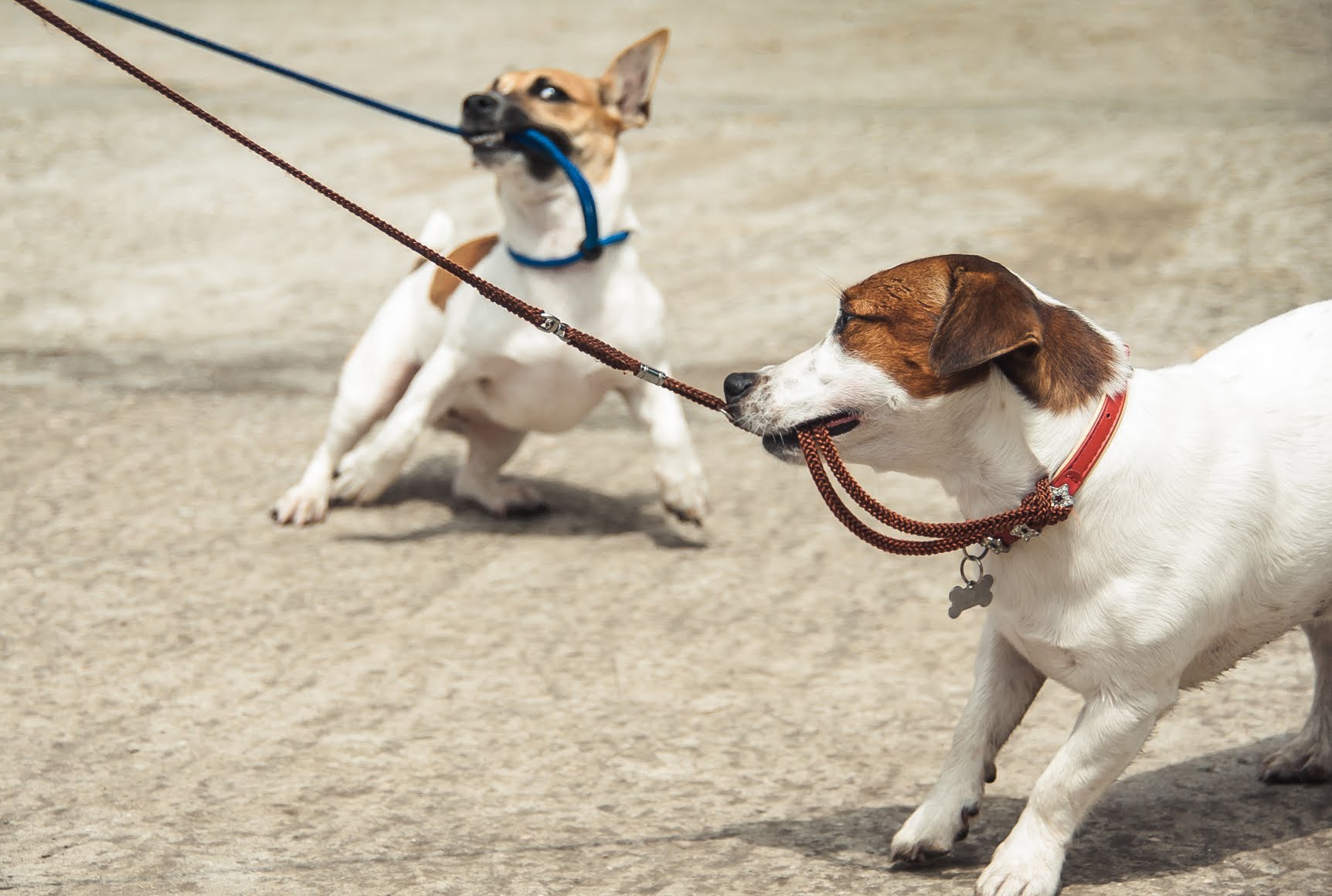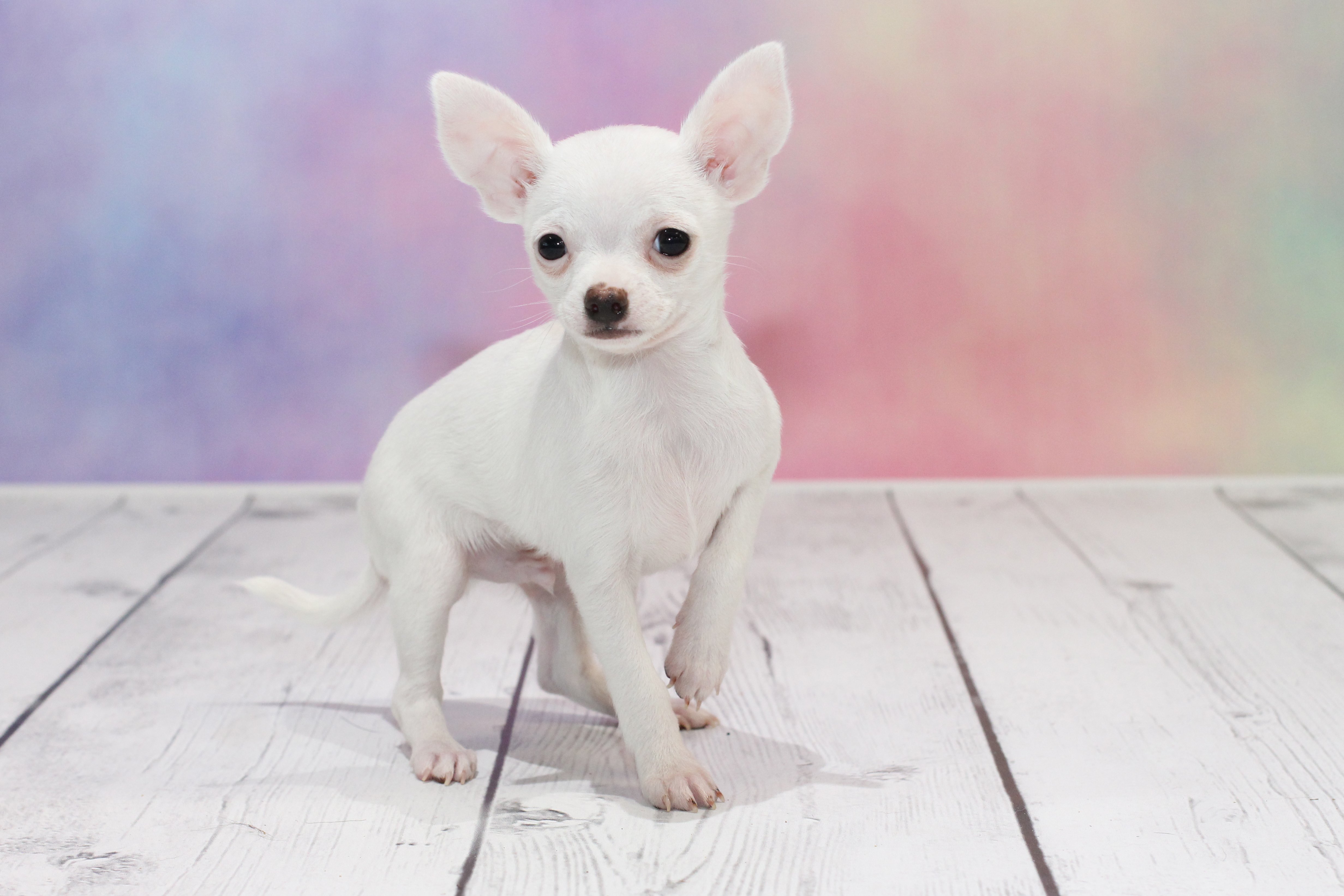October 29, 2016
A walk with your dog can be a soothing time spent with your canine best friend — or it can be a battle for control. The way your dog acts when he’s on a dog leash can cause serious problems. As a dog trainer, I frequently work with clients whose canines are pulling on the leash, mouthing the leash, and barking and lunging at the end of the dog leash. All of these behaviors are problematic, but all have solutions.
Here are three common leash problems and solutions for each.
Pulling on the Dog Leash
What it looks like:
Your dog strains at the leash, nearly choking himself. This may be the way your dog habitually walks, or perhaps the pulling only happens at the beginning of the walk or in high-distraction, exciting situations.
Why it happens:
Dogs naturally want to pull against pressure rather than giving into it. Your dog learns that when he pulls, he is more likely to get where he wants to go — and to get there faster. Dogs who pull have little connection with the human on the other end of the leash; they’re only interested in what’s in front of them.
How to change it:
Gain control by only allowing your dog to move forward when the leash is loose. As soon as your dog pulls hard enough to make the leash tight, stop in place and wait for a loose leash before continuing forward. For dogs who are especially resistant to change, use a verbal marker like “oops” to mark when the leash becomes taut, and then change direction with a gentle pull (no jerking) that hinders any forward motion. When a dog is pulling to get to something, like sniffing a bush or going into the dog park, only allow forward movement while he is on a loose leash. Once he has walked close enough to the area of interest, ask for a quick behavior, like a hand target or sit, and release him to sniff the bush or enter the dog park as a reward.
In addition, carry treats to reward your canine every time he checks in and turns his head toward you or even in your direction. This increases your dog’s awareness of your presence and teaches him that looking at you is more rewarding than looking around him. Teach and reward a heel on leash, or walking aligned next to you; this can be a useful alternative behavior when your dog is highly aroused. Your entire walk doesn’t need to be a heel, though — loose-leash walking allows your dog to explore and sniff, which is important for his mental health. Ask your dog to heel until he calms down or you pass the distraction, and then release him on a loose leash as a reward.
Mouthing and Chewing the Dog Leash
What it looks like:
Your dog grabs the leash in his mouth. Some nibble and bite, while others pull, like a game of tug-of-war. This may be done while walking or when standing still with the leash on.
Why it happens:
Some dogs do this frequently, all throughout the walk, while others only do it when they are over-the-top with nervous agitation. Having something in their mouth is calming for some dogs, especially those bred to retrieve objects, like Labradors. It’s also a game that gets attention and a reaction from people.
How to change it:
Teach your dog an alternative behavior to do instead. For some dogs, merely asking for a heel while walking or rewarding a quiet behavior while waiting, such as a down, replaces the leash chewing. You can also take the fun out of unwanted mouthing by downplaying the behavior. Try using two leashes, one on a harness and the other on the collar. When your dog grabs one leash to mouth or chew, drop the leash to take away the resistance that is naturally created when you’re holding on to the leash. Switch between leashes as needed so that there is no fun tug available with the leash game.
Lunging, Barking, Reacting on Dog Leash
What it looks like:
Your dog will usually be reacting to something in his environment. Often it’s another dog, but triggers also include joggers, bikers, skateboarders or strollers. Your dog may lunge, stand on his hind feet and strain at the end of the leash, spin in circles or vocalize with barks and whines.
Why it happens:
Most of the time these behaviors are rooted in anxiety and frustration. Your dog becomes upset at the sight of the stimulus for a number of reasons, such as: He cannot approach the stimulus and check it out because he is restricted by the leash, or the leash restricts his ability to get away from a situation that makes him uneasy and anxious. There may also be an element of chase to the sequence, especially with faster-moving joggers or bikers; the dog wants to run after them as they move past but cannot because he is on a leash. It is important to note that the more a dog is punished for reacting on leash, the worse the behavior can become; punishment can cause a dog who already has a negative association with a situation to become even more aroused and upset in that situation.
How to change it:
It’s important in a situation like this to get help from a professional, such as a veterinary behaviorist or a veterinarian working with a positive reinforcement trainer. This issue rarely resolves on its own and requires assessing the individual dog’s emotional state, triggers, level of aggression on leash and the degree to which the dog poses a risk to other animals, people and to himself through this behavior. You will need to work with a trainer to address your dog’s response to the specific stimulus and provide a better alternative behavior for him to perform in that situation.
We hope this blog was helpful for anyone out there seeing issues like these with their beloved pups! Here at PetCenter, we can help you out with tips and tricks for getting your pooch walking on a leash appropriately and at your speed. We also carry many different types of dog leashes and collars and we can help you pick out the perfect one (in the perfect size!) for your pet’s needs. Thanks so much for reading our blog!


